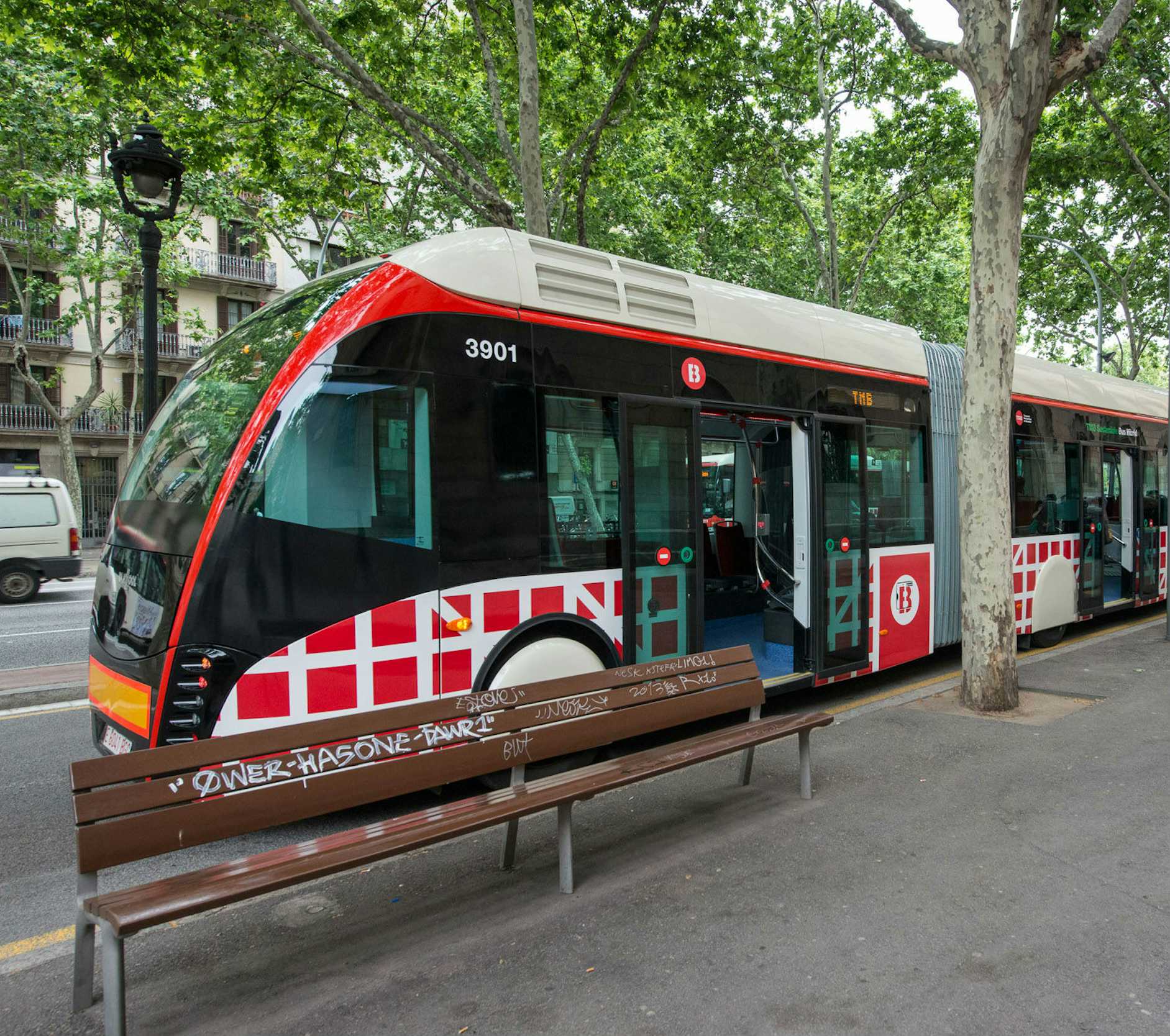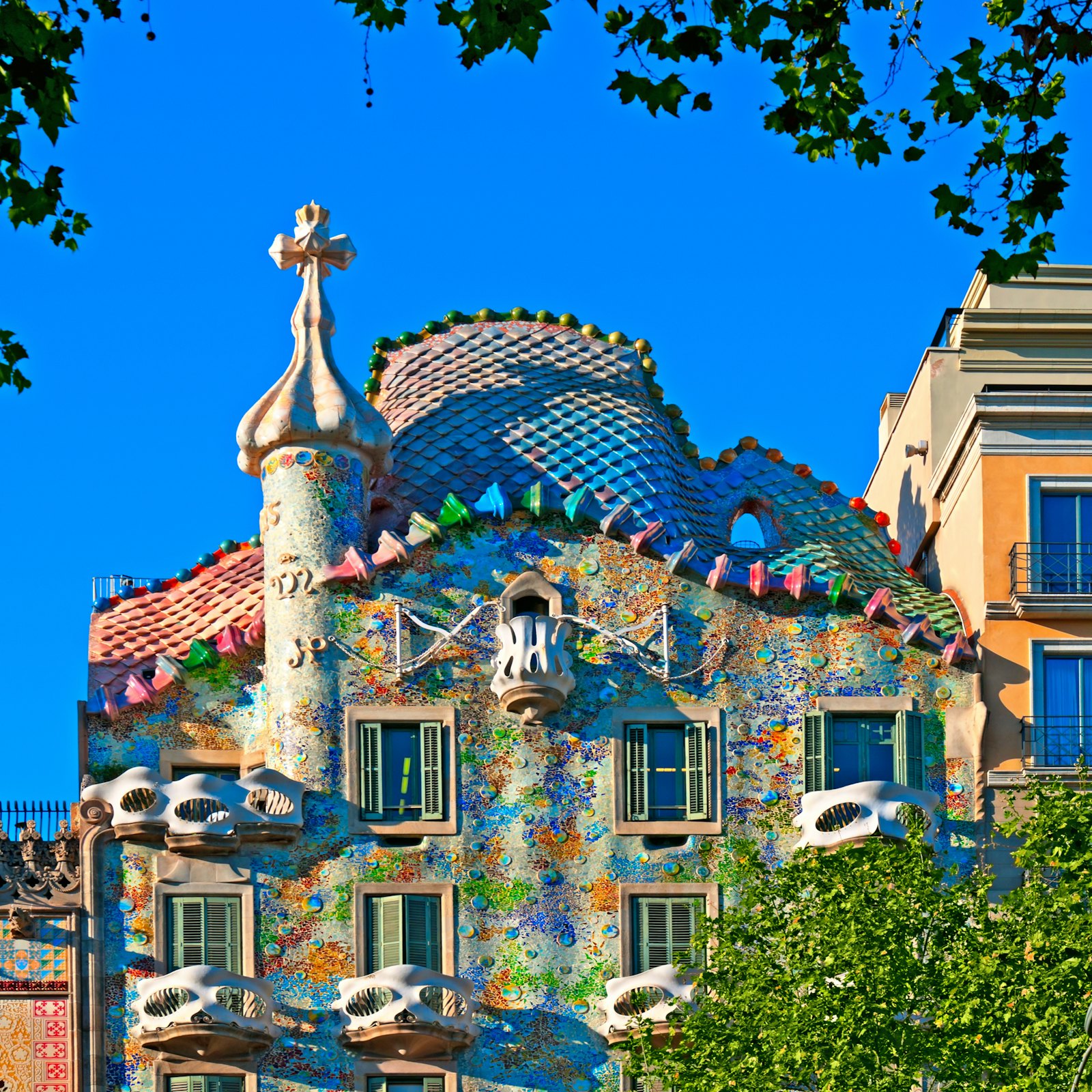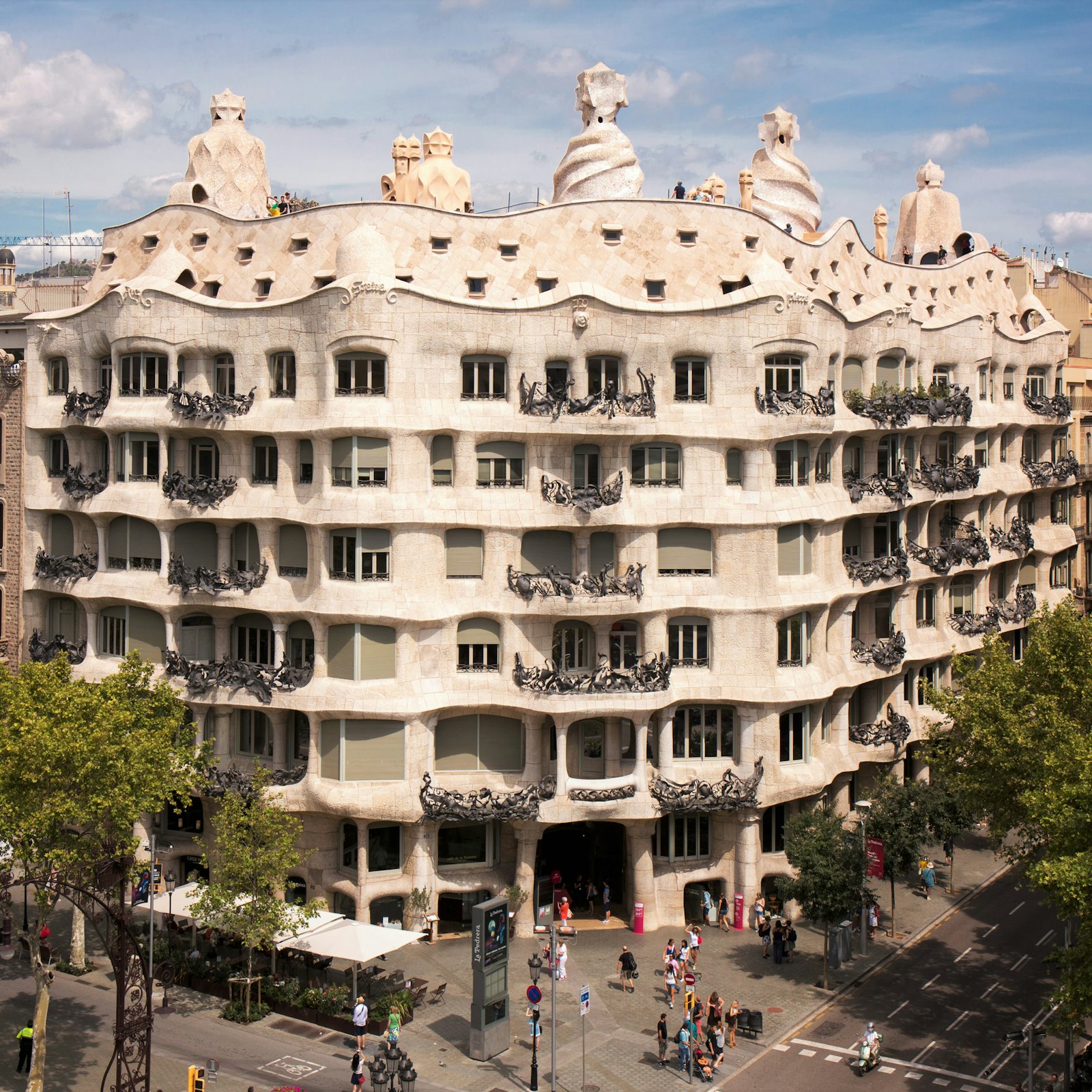Gaudi Tickets
More TicketsGaudi Options
More TicketsThe Gaudi Bundle
- Select your visit dates
- Complete secure payment
- Receive your tickets via email
- Save 10% on next booking (see details on next page)
Palau Güell (Güell Palace): Skip The Line Ticket
- Instant Ticket Delivery
- Smartphone Tickets Accepted
- Skip The Line
- Wheelchair Accessible
Casa Vicens: Skip The Line Ticket
- Instant Ticket Delivery
- Smartphone Tickets Accepted
- Wheelchair Accessible
- Audio Guide
- Skip The Line
Tickets for Torre Bellesguard with Audio Guide
- Instant Ticket Delivery
- Smartphone Tickets Accepted
- Audio Guide
Park Güell: Entry Ticket
- Instant Ticket Delivery
- Smartphone Tickets Accepted
- Fast Track Access
Best of Barcelona Bundle
- Select Your Visit Dates
- Complete Secure Payment
- Receive Your Tickets Via Email
- Save 10% on Your Next Booking (see next page for full details)
Gaudi Options
More TicketsAntoni Gaudi i Cornet(1852 - 1926)
Antoni Gaudi is the visionary architect behind some of Barcelona's most iconic landmarks and most popular tourist attractions. Born 25th June, 1852 in Reus, Spain and died on 10th June, 1926 in Barcelona, Spain, having sadly been hit by a Tram.
Gaudi's career spanned several decades and during that time he pioneered styles and designed some of the most famous landmarks in the world, let alone just Barcelona, such as the Sagrada Familia.
Gaudi's crowning glory must be the yet unfinished Sagrada Familia, which takes pride of place in Barcelona city, and is the city's most popular tourist attraction bringing an estimated 20,000,000 visitors to the city each year, with around 7,000,000 of those buying tickets to enjoy the inside of the magnificent church. Gaudi's designs are a major tourist attraction for Barcelona and they attract people from all over the world.
Not all Gaudi's designs are open to the public. Below we will concentrate on those that are.
Gaudi was born in 1852 in the province of Tarragona in Catalonia, Spain. He went to school at the Piarist School in Reus, where its said that he excelled and found his passion for drawing and design, which is what then attracted Gaudi to move to Barcelona and study architecture at the Higher School of Architecture (the school is now known as the Barcelona School of Architecture) where is honed his skills and found his passion for using nature as his inspiration. Gaudi graduated in 1878.
Casa Vicens (Ticket Options)
One of Gaudi's first major commissions was Casa Vicens in the Gràcia neighbourhood of Barcelona. Built between 1883 and 1885 for a stock and currency broker called Manel Vicens i Montaner, who asked Gaudi to design and create a summer house for him and his family.
Gaudi took his inspiration from multiple sources for Casa Vicens, which can be seen in its design which includes elements of Catalan architecture, Islamic art as well as Japanese design.
Morabanc, an Andorran bank, purchased Casa Vicens in 2014. It had remained a private residence up until that point but is now open for the public to enjoy with the appropriate ticket.
El Capricho (Ticket Options)
Whilst Gaudi was building Casa Vicens, he was commissioned to build another property, a summer villa called 'El Capricho' by a man called Máximo Díaz de Quijano. Quijano happened to be related to Eusebi Güell, who Gaudi went on to become close friends with and completed further projects for.
El Capricho isn't one of Gaudi's more famous properties but it is open to the public nonetheless, with the appropriate ticket. However, the commission turned out to be a pivotal moment for Gaudi as it introduced him to Eusebi Güell, and it turned into a friendship and further commissions.
Sagrada Familia (Ticket Options)
In 1883, Gaudi took over the what would be the project he would end up (at a later date) dropping all other work for, The Sagrada Familia. The original architect had differences of opinion with Josep Maria Bocabella, the man that decided to build the Sagrada Familia, and it was at this point that Antoni Gaudi got involved in the project. The Sagrada Familia's full title is actually 'The Basilica i Temple Expiatori de la Sagrada Familia'.
Gaudi's vision was that he wanted to build the church incorporating the three stages of Jesus' life, the nativity, the passion and the glory, and with it, to use his style of including nature in the design. He would include elements in the architecture with stained glass and other design elements to tell the story through time, including other biblical events.
Gaudi new the project was going to go beyond his lifetime so its suggested that he concentrated on the external part of the church as he feared that the project could end after his death if the outside wasn't at a certain stage.
Gaudí himself devoted over 40 years of his life to the project until his tragic death in 1926, when he was sadly hit by a tram in Barcelona when it is believed he was on route to mass. Since then, a succession of architects have continued Gaudí's work, striving to remain faithful to his original design.
La Sagrada Familia hasn't been without its issues over time, as you would expect with such a large project. It suffered damage during the Spanish Civil War (1936-1939) when it suffered an arson attack. Works then started again in 1954 and other than during the Covid-19 pandemic in 2020, construction has been constant ever since.
Palau Güell (Ticket Options)
Having met Eusebi Güell whilst working on El Capricho, in 1888 Güell then commissioned Gaudi to design Palau Güell for him. The property would be used as both Güell family residence and also a space for holding receptions. Gaudi designed Palau Güell over six levels and centered around a large central hall with an amazing parabolic dome that would allow the natural light to flood in to help light the property. Gaudi also located the stables in the basement so Güell's horses could be stabled there. Gaudi built the chimneys and ventillation towers in a new style for Palau Güell, using the Trencadis method. He went on to repeat this style in Casa Batllo and Casa Mila (La Pedrera).
Park Güell (Ticket Options)
In 1900, Güell commissioned Gaudi again. This time, Güell wanted to create a garden city in Barcelona, where the wealthy and elite from Barcelona could spend their weekends. Güell wanted Gaudi to develop 15 hectares on land in the north of Barcelona to provide 60 homes. The project never completed though and only three properties were completed. Its said this was due to cost. However, of the three completed, Gaudi went on to live in one of them and actually lived there until the day he died. That property is now called the Gaudi House Museum (SEE TICKET OPTIONS) and you can visit the property with the appropriate ticket. Güell went on to donate the land to the city of Barcelona and Gaudi then designed what is now Park Güell for the public to enjoy!
Torre de Bellesguard (Ticket Options)
In 1900, Gaudi was also commissioned to design another family home in the north of Barcelona. The site where the property was to be located had a medieval past as it was where the last king of the Catalunya dynasty had lived. Gaudi incorporated this into the design of the property, so it partly symbolises the story of Marti the Humane. Gaudi again used designs in this property that we would later use again at Casa Batlló and La Pedrera.
Casa Batlló (Ticket Options)
In 1904 Gaudi was commissioned by Josep Batlló Casanovas to extend and renovate what would become one of his most famous properties, Casa Batlló. Casa Batlló has many nicknames including 'the house of bones', 'the house of masks', 'the house of beards' or 'the house of the dragon'.
The original property was actually built by Emilio Sala Cortes, who also happened to be one of Antoni Gaudi's architectural professors in 1877 whilst he studied. When Batlló later purchased the property he gave Gaudi full creative freedom to do as he wished. Casa Batlló was completed in 1906.
Casa Batlló remained in the Batlló family until the 1950's when it was then sold and then it had multiple owners between the 50's and the 90's at which point the Bernat family took ownership and they still own it to this day. The Bernat family took the decision to open it to the public in 1995 to be enjoyed as part of UNESCO's 'Works of Gaudi' collection, and Casa Batlló now welcomes around 1,000,000 visitors each year and is one of Barcelona's top tourist attractions and landmarks.
Casa Batlló has won multiple awards over the years, including:
- In 1962 Casa Batlló was named a "National Cultural Asset of Catalonia (BCIN)"
- In 1969 Casa Batlló was named a "Cultural Asset of Spain (BIC)"
- In 2005 Casa Batlló received its UNESCO World Heritage Site status
- In 2006 Casa Batlló received "The Award for the Conservation of Architectural Heritage"
- In 2008 Casa Batlló was named "One of the Seven Wonders of the Cultural Heritage of Barcelona"
Casa Milà - La Pedrera (Ticket Options)
In 1906 Gaudi was commissioned to design Casa Milà or 'La Pedrera' as its commonly known. This project would also turn out to be Gaudi's last private commission.
Casa Milà was commissioned by Pere Milà (which is where the main name of Casa 'Milà' comes from) and his wife, Roser Segimon, as their family home and Antoni Gaudi finished it in 1912. The Milà family went on to live in one part and rented the rest of the building out as apartments.
Casa Milà - La Pedrera was constructed on Passeig de Gracia, being one of the most exclusive roads in Barcelona (and still remains fashionable today).
Whilst Gaudi was building the property he even refused to follow building guidelines issued by the council. This resulted in the actual size of the property being beyond that that was allowed, in essence making it illegal at the time! It was only after completion of Casa Milà that the council certified the building as "a monument in nature" and thus on that basis, it did not need to abide by the bylaws! Incredible! Maybe the council could see the future genius - now being one of the biggest tourist attractions in Barcelona!
Casa Milà was given the nickname of 'La Pedrera' and is now commonly known as that because the front of the property looks similar to an open rock quarry due to it's stone facade and its iron balconies. Gaudi took design features he had used at both Palau Güell and Casa Batlló and used them at Casa Milà La Pedrera, such as the roof design with its chimneys and ventilation stacks.
Gaudi Options
More TicketsGaudi Barcelona Tickets
Frequently asked questions
Gaudi's most famous buildings in Barcelona are the Sagrada Familia, Park Güell, Casa Milà La Pedrera and Casa Batlló
Antoni Gaudi was born in Reus, Catalonia, Spain on 25th June 1852
Yes, multiple of Gaudi's designs are listed by UNESCO World Heritage, including Sagrada Familia, Casa Batlló, Casa Milà La Pedrera & Park Güell, and form the collection of 'Works of Gaudi'
Antoni Gaudi was a Catalan architect born in 1852 and died in 1926 and was responsible for designing some of the most famous landmarks in Barcelona including The Sagrada Familia, Casa Batlló, Casa Milà La Pedrera and Park Güell, amongst others.















